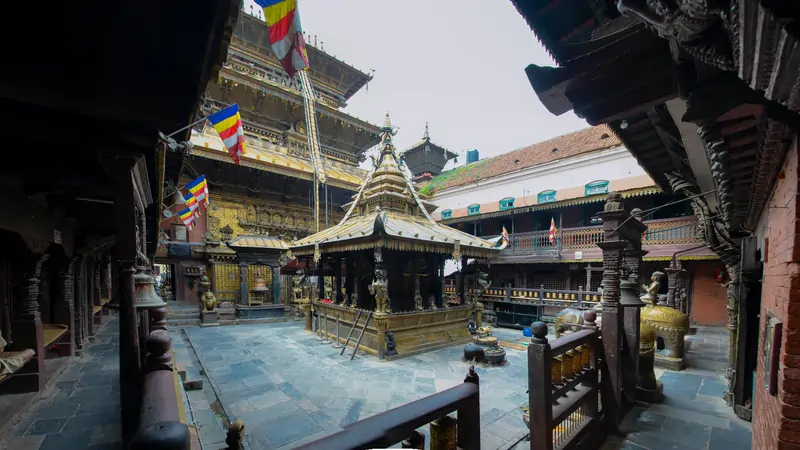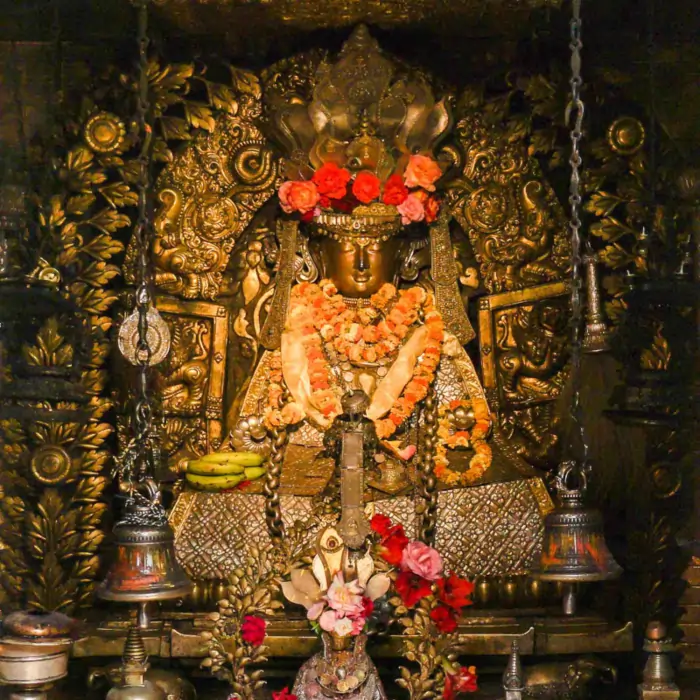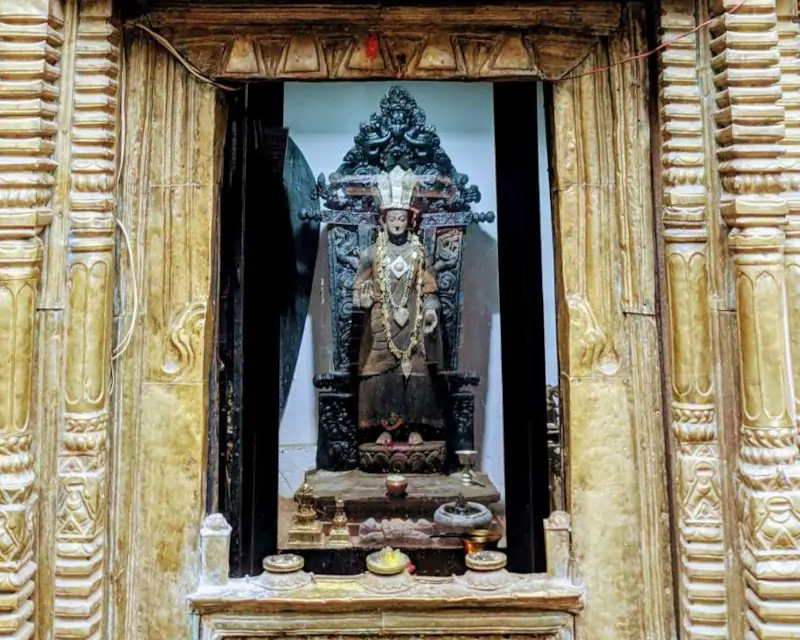The Mahavihar: A Sanctuary of Spiritual Significance
At the core of Bajracharya religious practices lies the Mahavihar, a prominent monastery distinguished by its Bahal, a traditional Newar courtyard, known as “बा:” or “बहा:” in Newari. This architectural element is a hallmark of Newari designs, where ‘Bahal’ translates directly to ‘courtyard’. The Mahavihar’s crown jewel is the deity Kwapa Dya or Kwapa Dyo or Kwapa Dhyo, in Newari क्वापाद्य:, signifying its deep spiritual importance in the community. Kwapa Dya means “Guardian of the Community“. It comes from the Newari word Kwaca-Pala (क्वाचपाल).
The Architectural Harmony of Bahal
In most Bahals, the construction follows a uniform design. It typically features a courtyard surrounded by two-story townhouses. The ground level often serves as an open patio, while the upper floor houses living quarters. Notably, the ground floor, across from the main entrance, is always dedicated to the shrine of the main deity, the heart of Mahavihar, Kwapa Dya. However, Jana Bahal (Kanak Chaitya Mahavihar) in Kathmandu stands as an exception, where Kwapa Dya’s shrine is to the right upon entering, while the deity Karunamaya Janaba Dya, White Machhindranath, is positioned opposite the main entrance.

The Shrine and Rituals of Kwapa Dya
In front of the Kwapa Dya shrine, one typically finds a Chaitya and a Dharma Dhatu Mandala, essential for principal worship within the Bahal. The shrine’s upper level, known as the Agam, houses tantric deities and is a venue for secret tantric rites of Vajrayana Buddhism. Access to this area is highly restricted, reflecting its sacred nature.

Chakrasamvara & Vajravarahi, Hevajra & Nairatmya, Yogambara & Jnana, and Kalachakra & Visvamata are among the renowned Tantric deities in Vajrayana Buddhism, revered as Kul Devata, the main family deities, by the Bajracharyas.
Directional Sanctity of Kwapa Dya Shrines
The favored orientation for Kwapa Dya shrines is north-facing, with over half of these shrines facing this direction. While some shrines face east, westward-facing shrines are less common. Notably, no Kwapa Dya shrine faces south, as it’s considered inauspicious, showcasing the careful consideration of direction in their religious tradition.
The Iconography of Kwapa Dya
Kwapa Dya is consistently depicted as a non-tantric deity, often in the form of the Buddhas or a principal Bodhisattvas. Approximately two-thirds of the representations are of the Buddha seated in the Vajrasana pose, displaying the earth-touching gesture, embodying the transcendent Buddha Aksobhya. Another frequent depiction is the standing Buddha in the Visvavyakarana Mudra (also known as Vyakarana Mudra), identified locally as Maitreya, the future Buddha. Occasionally, images of other transcendent Buddhas like Amitabha, Vairochana, and Amoghasiddhi are found. A unique instance is the Kumari Bahal in Kathmandu, which features all five Transcendent Buddhas in its Kwapa Dya shrine.
Conclusion: The Essence of Tradition and Faith
The Kwapa Dya of Bajracharya Mahavihar represents more than just a religious icon; it is a fusion of architectural elegance and deep spiritual faith. Its design, orientation, and iconography reveal a rich cultural and religious heritage, offering insight into the Bajracharya community’s practices. This fascinating blend of physical space and spirituality highlights the importance of the Mahavihar and its deity, Kwapa Dya, in preserving and showcasing the essence of Newari religious traditions.
References
- Karunamaya: The Cult of Avalokiteswara, John K. Locke, 1980
- Buddhist Monasteries of Nepal, John K. Locke, 1985

